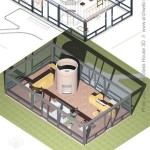How to Read House Plans: Measurement
Understanding how to read house plans is essential for anyone involved in the construction industry. Architects and engineers create these documents to communicate design intentions, and contractors use them as a guide to build the structure. House plans contain a wealth of information, including measurements, materials, and construction details.This guide will provide an overview of the most common measurements found on house plans and how to interpret them. Whether you're a homeowner, contractor, or simply curious about the construction process, this knowledge will empower you to better understand and navigate these documents.
### Interpreting Measurements on House Plans House plans use a combination of linear and area measurements to describe the size and dimensions of the structure.Linear Measurements: Linear measurements are used to indicate the length, width, and height of various components, such as walls, windows, and doors. They are typically expressed in feet and inches, with the feet denoted by a single prime mark (') and the inches by a double prime mark ("). For example, a measurement of 8'-0" indicates 8 feet and 0 inches.
Area Measurements: Area measurements are used to calculate the square footage of rooms, spaces, and the entire house. They are typically expressed in square feet (sq ft) and are calculated by multiplying the length by the width of the area. For instance, a room with a length of 12 feet and a width of 10 feet would have an area of 120 square feet (12' x 10' = 120 sq ft).
### Key Measurements to Look for The following are some of the most important measurements to look for on house plans:Exterior Dimensions: The exterior dimensions provide the overall size of the house, including the length, width, and height. These measurements are used to determine the footprint of the structure on the property.
Room Dimensions: Room dimensions specify the length, width, and area of each room in the house. This information is essential for planning furniture placement and understanding the flow of the space.
Wall Heights: Wall heights indicate the vertical distance from the floor to the ceiling. They are used to determine the volume of the space and the amount of material required for construction.
Window and Door Openings: Window and door openings specify the size and location of all openings in the exterior walls. These measurements include the width, height, and elevation from the floor.
Structural Measurements: Structural measurements provide information about the supporting elements of the house, such as the size and spacing of beams, columns, and footings. These measurements are critical for ensuring the stability and safety of the structure.
### Understanding Scale House plans are typically drawn to scale, which means that the measurements on the plan represent the actual size of the structure. The scale is usually indicated on the drawing itself or in the title block.For example, a scale of 1/4" = 1'-0" means that every 1/4 inch on the plan represents 1 foot in real life. Using a scale ruler or a measuring tape, you can determine the actual measurements of any element on the plan by multiplying the measurement on the plan by the scale factor.
### Tips for Reading House Plans Here are a few additional tips for reading house plans:
How To Read A Floor Plan With Dimensions Houseplans Blog Com

How To Read A Floor Plan With Dimensions Houseplans Blog Com

How To Read A Floor Plan With Dimensions Houseplans Blog Com

How To Read Floor Plans 8 Key Elements A Plan Foyr

How To Read Floor Plans With Dimensions A Guide

How To Read Floor Plans With Dimensions A Guide

How To Read Floor Plans With Dimensions A Guide

How To Read Blueprints

Do You Know How To Read Floor Plans

How To Read Floor Plans








